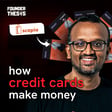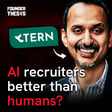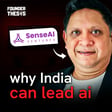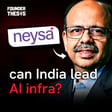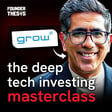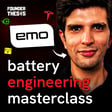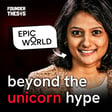
The Licious Co-Founder on his big Petcare bet | Varun Sadana (Supertails)
How did Varun Sadana go from building India’s most loved meat brand Licious to disrupting the fast-growing pet care industry with Supertails? In this episode of the Founder Thesis Podcast, we uncover the bold bets behind India’s first digital-native pet health and commerce platform.
Varun Sadana, co-founder of Supertails and ex-co-founder of Licious, shares his fascinating journey from corporate roles at Hindustan Unilever and Snapdeal to building category-creating consumer brands. Supertails, founded in 2021, blends tele-veterinary care, pharmacy, and e-commerce into one seamless platform for India’s growing pet parent community. In this candid conversation with Akshay Datt, Varun reveals how Supertails scaled to 250,000+ vet consultations, built trust in a regulatory gray zone, and positioned itself in a sector projected to hit $16B by 2032. From insights on omnichannel expansion to contrarian views on unit economics, this episode is a masterclass in building durable consumer businesses in sunrise sectors.
What you’ll learn in this episode:
- How Varun Sadana transitioned from Licious to founding Supertails
- The business model behind Supertails’ tele-vet and commerce flywheel
- Lessons on scaling during India’s funding winter and capital discipline
- Macro trends reshaping India’s $10B+ pet care market
- Insights on competition with Heads Up For Tails, Zigly, and Drools
- Why regulation and clinical trust are the hidden moats in pet health
Subscribe to the Founder Thesis Podcast
Follow Akshay on LinkedIn for exclusive content: podm.in/ad
Visit founderthesis.com for more founder stories
00:00 - Varun Sadana’s journey from Licious to Supertails
06:10 - Founding Supertails to disrupt India’s pet care market
14:25 - How Supertails built trust with 250k+ tele-vet consults
21:40 - Scaling pet health commerce in India’s funding winter
30:55 - Competing with Heads Up For Tails, Zigly, Drools
41:20 - Omnichannel strategy and offline clinics at Supertails
50:05 - Regulatory risks and tele-vet readiness in India
58:45 - Future of pet care startups in India
Varun Sadana, Supertails, Licious cofounder, Supertails pet care, pet startups India, veterinary telemedicine India, India pet food market, Supertails funding, pet health startups India, Heads Up For Tails competitor, Zigly pet clinics, Drools Nestle, pet pharmacy online India, tele vet consultations India, D2C pet brands India, omnichannel retail pet care, future of pet industry India, Supertails interview Akshay Datt, Founder Thesis Varun Sadana, Indian startup podcast






